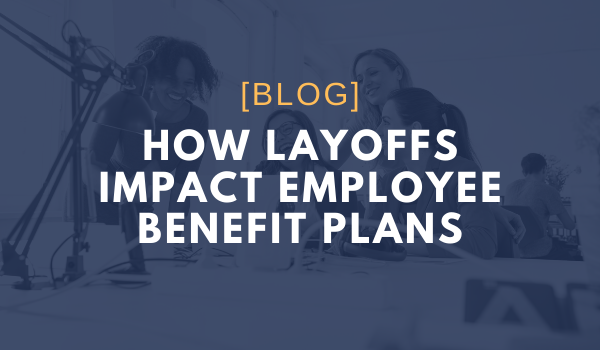While the Coronavirus pandemic is a public health crisis, it’s also having a significant negative impact on business.
With many states under “shelter-in-place” orders, businesses deemed “non-essential” are unable to operate at full scale.
As an employer, how will you react to the disruption of your normal business operations?
One option may be to consider reducing hours of employees or laying them off. But, such actions have consequences, specifically for your employee benefit plan.
Here are some of the issues.
If an employee is laid off or has his hours reduced, what impact does that have on health insurance?
If you offer health coverage then you most likely require contributions from your employees. In many cases, those contributions are made through payroll deductions and often through a cafeteria plan.
You have to decide whether you will pick up the entire cost of the plan during a temporary furlough or reduction in hours and, if not, how will you collect the employee’s portion of the cost if there is no payroll to withhold?
You must review your plan document and any insurance policy issued to the plan, whether it’s a fully-insured or self-funded plan with stop-loss insurance.
The plan document will determine whether a furloughed employee, or one whose hours have been reduced, is still eligible for coverage.
You may have to amend your plan.
In addition, review any insurance policy issued to the plan to determine whether a furloughed employee or one whose hours have been cut is still covered. You may have to ask your insurance company to amend the policy.
What about employees who are terminated?
A termination of employment is a qualifying event under the Consolidated Omnibus Budget Reconciliation Act (COBRA). A reduction in hours may also be a qualifying event, depending upon the scope of the reduction.
If the action taken constitutes a qualifying event under COBRA, then you must provide the required notice and opportunity to elect coverage under COBRA.
How is paid leave handled?
Any action you take may implicate the employee’s right to paid or unpaid leave.
Check your sick leave or PTO policy.
A furloughed employee may be able to take advantage of paid leave during a furlough. In addition, the Families First Coronavirus Relief Act expanded an employee’s right to Family and Medical Leave.
You will have to check whether a furloughed employee will be entitled to claim the right to payment under that legislation.
What about highly compensated employees?
Any action you take cannot be discriminatory by job function. This means that more generous benefits cannot be offered to highly-compensated employees.
Conclusion
It’s clear that the Coronavirus pandemic will have consequences well beyond the health of your employees.
If your business is considering furloughing or laying off employees, it’s important to first get clear about how your existing policies, procedures, and employee benefit plan documents will respond.
This will dictate how benefits are extended to those employees for a period of time afterward.
Is your businesses planning on reducing your staff as a result of COVID-19?
Drop a comment below or contact us with any questions regarding your health plan and any insurance policy issued to the plan.



-Nov-07-2025-07-06-02-9436-PM.png)